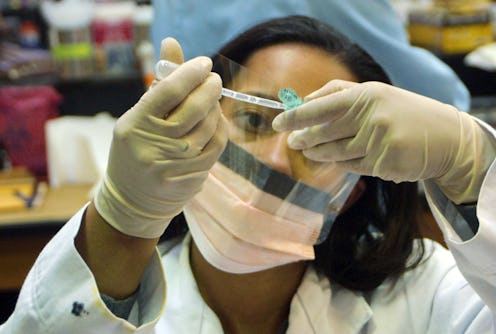News
Scientists Can Predict Your Appearance from DNA
In the not-too-distant future, it may be possible to create a digital mugshot from DNA. Researchers from Pennsylvania State University, led by anthropologist Mark Shriver, published a study this week on their attempts to understand how our genetic code influences our facial structure. That research, say the authors of the study, will one day make it possible to predict criminals' appearances based only on, say, a strand of hair left at a crime scene.
Although things like sex, skin tone, and eye and hair colors are relatively easy to predict from DNA, facial structures have always been more of a mystery. Faces are complicated, and how one part is shaped can strongly influence other parts of the face. To tackle such a complex project, the researchers took pictures of 532 people of mixed European and West African ancestry from three different regions. They then made 3D images of those faces, overlaying each of them with 7,000 data points to determine variation among faces. Nature explains what they did next:
Next, the authors compared the volunteers’ genomes to identify points at which the DNA differed by a single base, called a single nucleotide polymorphism (SNP). To narrow down the search, they focused on genes thought to be involved in facial development, such as those that shape the head in early embryonic development, and those that are mutated in disorders associated with features such as cleft palate. Then, taking into account the person’s sex and ancestry, they calculated the statistical likelihood that a given SNP was involved in determining a particular facial feature.
In the end, the scientists found 24 SNPs on 20 different genes, all of which control facial structure to some extent. Of course, a person's entire appearance isn't solely dictated by his or her DNA, and current methods for testing DNA are by no means falling by the wayside. "Human facial diversity is substantial, complex, and largely scientifically unexplained," write the researchers in the study's abstract, published in PLOS Genetics. Still, their predictive model can already create a crude facial model based only on genetic code, and the project's usefulness for detectives is already being tested. Shriver is already working with police to find a serial rapist in Pennsylvania.
